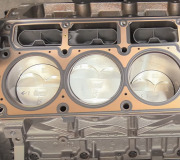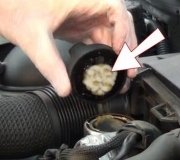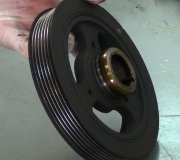There are core plugs in the engine block, and sometimes in the head but those are smaller. They are called core plugs because those holes are used to knock out the sand after they make the casting, also called a core, but many people call them freeze plugs because if the coolant is too much water and it freezes, those plugs may get pushed out by the ice. That might save the block from cracking.
I doubt you have a cracked block since you didn't have this problem before. There's usually one or two plugs on the back of the engine block that are not visible when the transmission is bolted up to it. It is somewhat common for them to corrode and leak. The coolant will run out in front of the bottom of the transmission. Replacing those requires removing the transmission but you didn't cause that by removing the cylinder heads.
You might be able to find a sensor or access cover that you can remove so you can look down in there to see where the leak is. If you don't see any water at the back of that cylinder head, those rear core plugs become a good suspect.
I can't remember what your engine looks like, but if it's anything like the Mitsubishi 3.0L V-6 in my Grand Caravan, there's a metal pipe running under the intake plenum from the back of the water pump housing, and it exits above the transmission where the lower radiator hose attaches to it. If you have that same design, there's an o-ring on the water pump end of that pipe that could deteriorate, and that tube could have a hole in it. Water leaking from either of those places will run to the back of the engine and down in front of the transmission. Typically that tube can be removed rather easily without taking anything else apart.
Monday, September 1st, 2014 AT 11:03 PM



